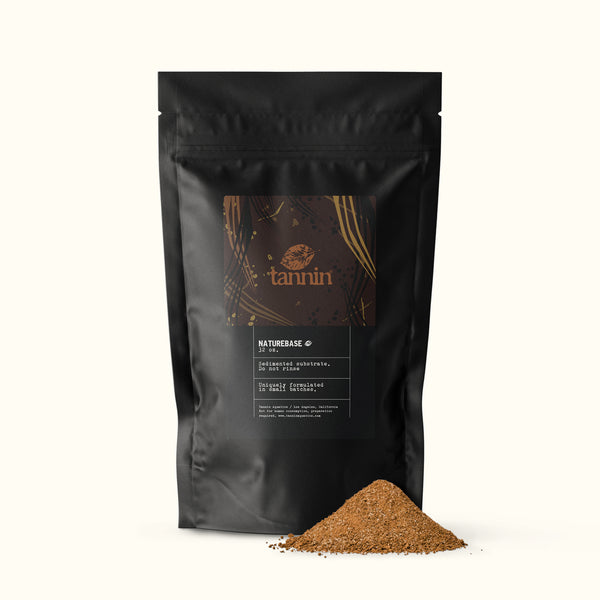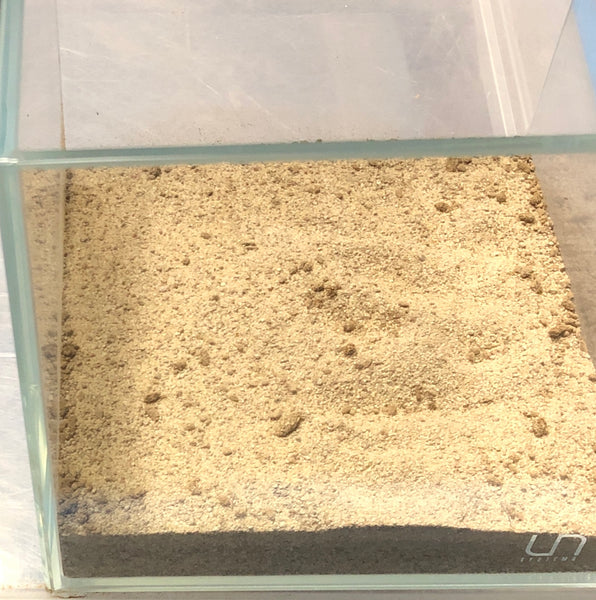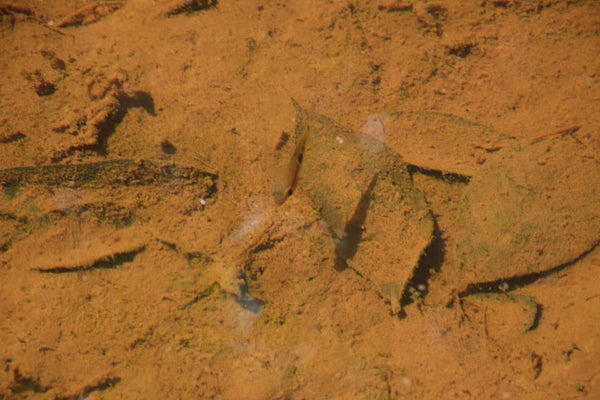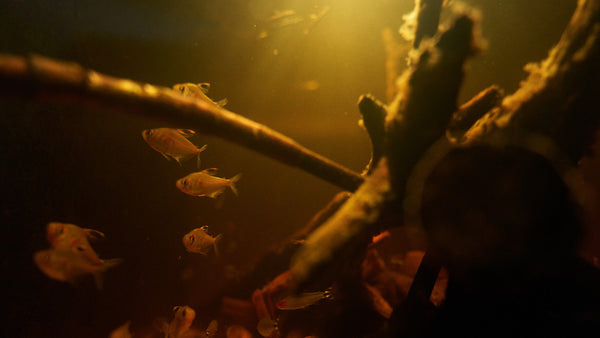- Continue Shopping
- Your Cart is Empty
Getting to the bottom of the "sedimented substrate thing..."
Okay, today is one of those posts where I simply can't make any excuses for it being a bit blatantly commercial. And that's something that I have to live with, right? I mean, I own a company which sells natural materials for aquariums, and I have written a blog for over 5 years, and recorded a podcast for almost 2 yrs...every once in a while, a blog or podcast can focus on one of our products...and today is such a day!
Yeah.
Recently, we introduced a line of substrates called NatureBase. And, they've proven crazy popular! Yet, they generate a lot of questions...

We describe our products as "sedimented substrates", because that's what they are- consisting largely of clays, sand, soil, and other materials (mineral sediments!) which mimic some of the properties of the soils of South America and other locales that we find so compelling.

Now, one of the first questions people ask about our soils is "What makes them different than the other materials on the market?" Well, I could go on and on, but quite simply, the answer is that these substrates were formulated to replicate the terrestrial soils of these habitats, which become inundated during seasonal rains and flooding.

Forest floor soils in tropical areas are known by soil geologists as "oxisols", and have varying amounts of clay, sediments, minerals like quartz and silica, and various types of organic matter. So it makes sense that when flooded, these "ingredients" will have significant impact on the aquatic environment. This "recipe" is not only compositionally different than typical "off-the-shelf" aquarium sands and substrates- it looks and functions differently, too.

They weren't designed from the get go to replicate say, river, stream, or lake substrates writ large.

And, they weren't intended to be a "go-to" substrate to replace the standard commercial aquarium substrates, because: a) they're hand-mixed, and therefore more expensive, b) they're not specifically "aesthetic enhancements", c) they are not formulated to be general aquatic plant substrates d) because of their composition, they'll add some turbidity and tint to the aquarium water, at least initially (not everyone could handle THAT!)

Rather, the intention was that our first releases "Varzea" and "Igapo" were formulated to be "transitional" substrate materials- starting out as terrestrial, able to grow some grasses and plants, and eventually becoming saturated and ultimately, submerged, transitioning to a fully "aquatic" substrate material.

Perfect for use in our "Urban Igapo" simulations, which is exactly what we developed them for...you know, the classic case of "scratching your own itch!"

Of course, this begs the question, "Can't they just be used like 'conventional' aquarium substrates from the start?"
And the answer is, "Yeah, they could. However, what will happen, because of their ingredients, is that they will create cloudy, turbid water in your aquairum." There is a reason why materials like fine clays and mineral sediments haven't been particularly popular ingredients in aquarium substrates before!

Some of the materials will not saturate immediately causing this turbidity for several days or more. Ultimately, however, the materials will settle out and you'd be good to go. If you're okay with this initial turbidity, go for it from day one!
Oh, and you shouldn't rinse this substrate. Use it right out of the bag.

One of the pleasant surprises of the "NatureBase" line has been that they do grow aquatic plants- quite well, actually. Surprising to us, because some of the ingredients that we used in our formulation aren't specifically well-known for growing plants. However, the others are more nutritious, and the "pluses outweigh the minuses", apparently!

So, why do people want to use this stuff?
Well, If you understand the context for which they are intended, and the habitats which they help to replicate, the cloudiness and sedimentation is perfectly acceptable and logical...Of course, you need to make that "mental shift" to appreciate this stuff, right?
You can do all sorts of cool stuff with them. Hell, you can even mix them with commercial, off-the-shelf substrates to make cool, functionally aesthetic "custom" mixes of your own! We do this a lot, and come up with all sorts of interesting stuff!

Another interesting consideration is that these substrates have carefully-selected botanical materials in them, which, as we know, help foster microbial growth as they decompose, which creates the aquarium equivalent of an "active substrate!"
They're intended to help foster the growth of beneficial bacteria, biofilms, fungal growth, and micro crustaceans, to help build up a functional, diverse benthic habitat in botanical-style aquariums. They will help form the literal "base" of your botanical-style aquarium system (hence the name of the product line, "NatureBase").

Is this starting to make more sense?
This falls perfectly in line with our intention to create a line of substrates that are more "microbiome-centric", helping shape the overall aquarium environment- not just a place to grow plants.

We're doing some very exciting tweaking to the existing formulas, which will be debuting in a few weeks- as well as releasing some new and very exciting specialized versions of Nature Base...and a series of other substrate materials as well!
So, yes, in summary, the most important role of these substrates is to form a habitat for various microorganisms, crustaceans, and other creatures to colonize and multiply. And that requires a substrate which not only includes the aforementioned subsides, but the botanical components as well.
The mixing of materials not only looks interesting- it's a reflection of the diversity and vibrancy of the underwater environment. And it's exactly what you'll see in the wild habitat, too.

One of the things you notice in the images we share of natural underwater substrates is that they're usually anything but squeaky-clean, ultra-white sand. Rather, they're often sediment-filled, covered with stringy fungal growths, biofilms, and even a spot or two of algae.
There is a fair amount of detritus accumulating in the substrate materials. And, as you know, detritus is not the enemy that we've made it out to be. Rather, it's a source of food for many aquatic animals, helping to literally "power" the ecosystem in which they are present. We see organic detritus as an essential part of the substrate, and this influenced our philosophy when formulating NatureBase.
This is something we can-and should- absolutely replicate in our aquariums. Don't be afraid of sediments and even detritus accumulating on top of your leaves and botanicals...it's exactly what you see in Nature, and our fishes are ecologically adapted to such habitats.

And of course, the whole idea of a rich, sediment-sand-and-soil substrate enriched with botanical materials is completely in line with the "best practices" we've developed as a community to create dynamic, botanical-style aquariums. In our case, not only will there be an abundance of trace elements and essential plant nutrients be present in such a substrate, there will be the addition of tannins and humic substances which provide many known benefits for fishes as well.
The best of both worlds, I think!

I hope this quick look at the NatureBase sedimented substrates answers a few lingering questions you might have had about them. And it probably has brought up a few more. No worries- we'll be revisiting this stuff more and more over the coming months!
Stay inspired, Stay creative. Stay fearless. Stay observant...
And Stay Wet.
Scott Fellman
Tannin Aquatics







Scott Fellman
Author